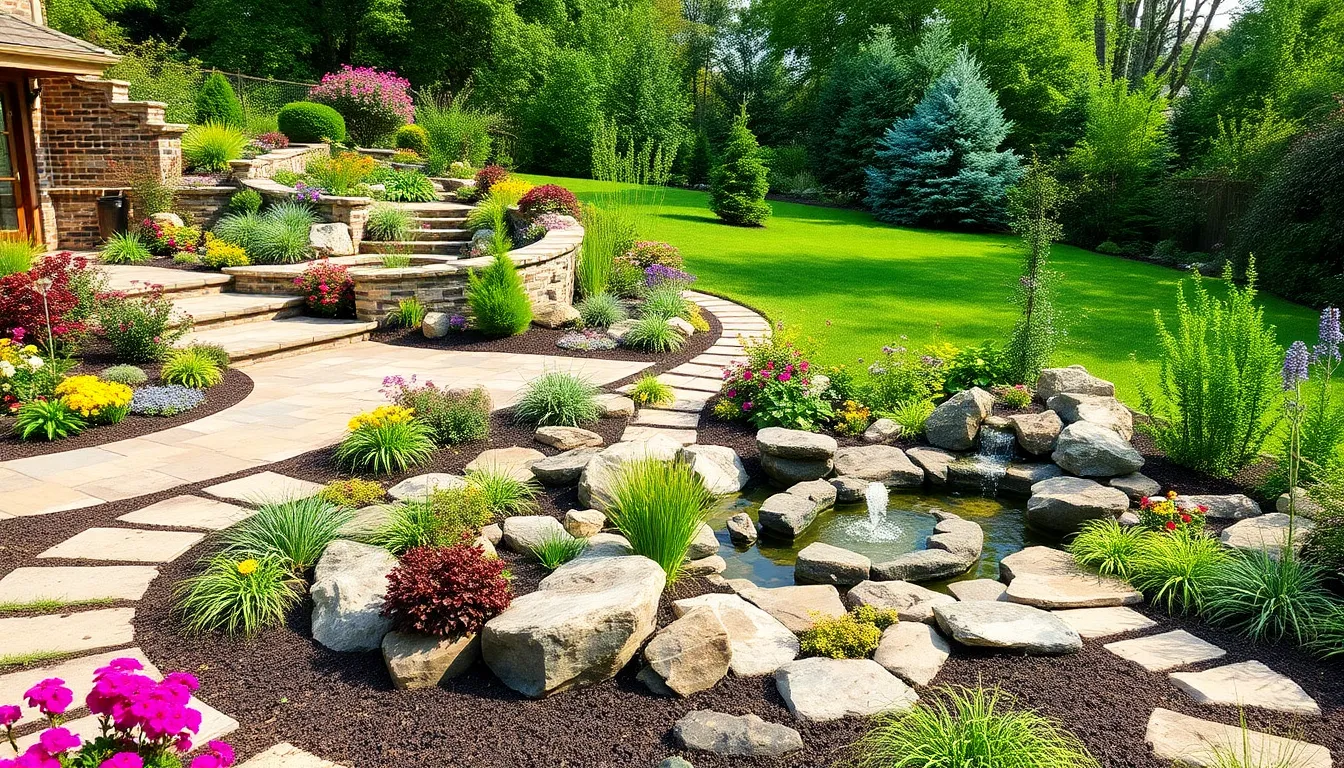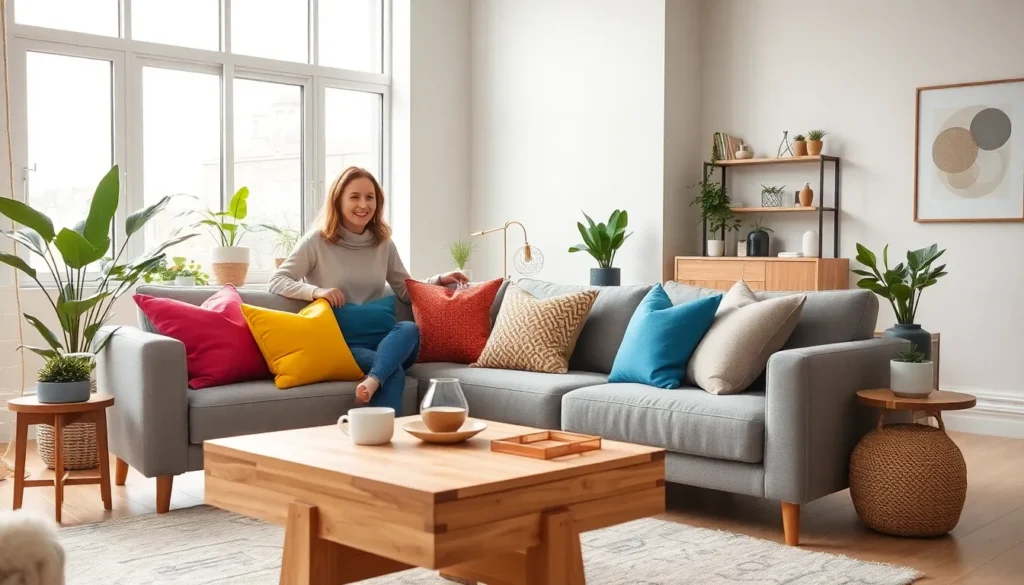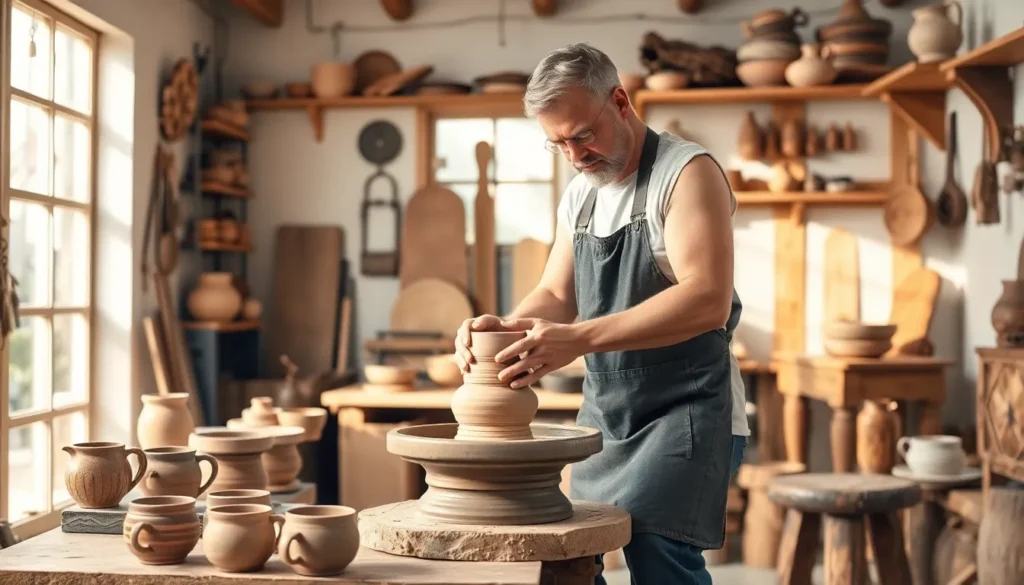Picture this: a backyard that feels like a vacation destination, where every corner invites relaxation and every plant tells a story. Landscape design concepts aren’t just for the pros; they’re for anyone wanting to turn their outdoor space into a masterpiece. Whether you’re dreaming of a Zen garden or a vibrant floral paradise, the right design can make all the difference.
Table of Contents
ToggleUnderstanding Landscape Design Concepts
Landscape design transforms outdoor spaces into appealing environments. Recognizing the fundamental concepts behind landscape design enables people to create functional and beautiful areas.
Definition of Landscape Design
Landscape design involves planning and arranging outdoor spaces to create an aesthetically pleasing and functional environment. This discipline combines elements such as plants, hardscapes, and structures while considering environmental factors. Designers account for the site’s topography, climate, and existing vegetation during the process. Structural features like patios, paths, and water elements play a significant role in enhancing usability. Ultimately, landscape design aims to provide harmony and balance in outdoor living spaces.
Importance of Landscape Design Concepts
Understanding landscape design concepts enhances both aesthetics and functionality of outdoor areas. A well-designed landscape contributes to property value and curb appeal, making spaces more inviting. It fosters a connection between nature and people, promoting relaxation and well-being. Additionally, thoughtful design can improve sustainability by incorporating practices that conserve resources and encourage biodiversity. Smart landscape choices can also reduce maintenance needs, simplifying upkeep while preserving beauty. Ultimately, clear design concepts lead to more fulfilling outdoor experiences.
Elements of Landscape Design

Landscape design involves several key elements that work together to create harmonious outdoor spaces. These elements include plants and vegetation, hardscape features, and water elements.
Plants and Vegetation
Plants serve as the foundation of any landscape design. They provide color, texture, and seasonal interest. Trees and shrubs frame outdoor areas, while flowers add vibrancy. Selecting native species enhances sustainability, supporting local wildlife. Incorporating various heights and shapes creates visual appeal and depth. A diverse plant palette contributes to overall health, ensuring resilience against pests and diseases. Understanding sunlight and moisture requirements is crucial for plant placement.
Hardscape Features
Hardscape elements complement natural features, providing structure and functionality. Patios, walkways, and walls create defined spaces for activities. Materials like stone, brick, or concrete offer durability and variety. Integrating seating areas and fire pits promotes social gatherings. Proper layout encourages foot traffic flow and enhances accessibility. By balancing hardscape with softscape, a cohesive design emerges, blending nature with human-made structures. Effective drainage and maintenance considerations contribute to longevity.
Water Elements
Water features bring serenity and movement to landscapes. Fountains, ponds, and streams introduce soothing sounds and attract wildlife. Incorporating reflective surfaces enhances light and adds depth. For small spaces, container water gardens provide options. Utilizing water efficiently supports sustainability while creating habitats for aquatic plants and animals. A well-placed water feature can become the focal point, elevating the overall design. Attention to maintenance ensures these features remain appealing and functional.
Principles of Landscape Design
Understanding key principles enhances the effectiveness of landscape design. These principles guide the arrangement and selection of elements, ultimately creating inviting outdoor spaces.
Balance and Symmetry
Balance involves distributing visual weight evenly across a landscape. Achieving symmetry creates a sense of order, where elements mirror each other, contributing to a cohesive design. Asymmetrical balance, on the other hand, offers a more relaxed approach, allowing for varied plant sizes and shapes to achieve equilibrium without strict mirroring. Both methods promote stability and aesthetic appeal, enabling outdoor spaces to feel complete and inviting.
Unity and Harmony
Unity unifies different elements within a landscape, creating a cohesive look. Harmony relates to the consistency of style, materials, and colors throughout the design. Selecting plants that share complementary colors or textures fosters a seamless transition between sections of a yard. Incorporating similar materials in hardscapes achieves a unified style. These strategies enhance the overall experience by providing a sense of oneness that ties the entire landscape together.
Contrast and Focal Points
Contrast introduces visual interest by highlighting differences among design elements. Dark leaves paired with light-colored blooms create dynamic visual tension. Focal points draw attention to specific areas, guiding the viewer’s gaze through the space. A vibrant sculpture or a flowering tree can serve as a captivating centerpiece in the design. Utilizing contrast alongside focal points establishes a layered and engaging landscape, encouraging exploration and appreciation of the beauty within the outdoor space.
Common Landscape Design Styles
Various landscape design styles cater to different preferences and aesthetics. These distinct approaches enhance outdoor spaces while reflecting personal taste.
Contemporary Landscape Design
Contemporary landscape design emphasizes clean lines and minimalism. This style often incorporates modern materials like concrete and steel, creating sleek, functional environments. Plant selections focus on drought-resistant varieties, integrating greenery with hard surfaces. Innovative lighting methods enhance atmosphere and highlight key features. Water elements, such as reflecting pools or fountains, further enhance the tranquil vibe. Overall, contemporary design promotes a seamless connection between indoor and outdoor spaces, making them perfect for modern living.
Traditional Landscape Design
Traditional landscape design draws inspiration from historical styles, offering a classic aesthetic. This approach often features symmetrical layouts and formal garden structures. Popular elements include manicured lawns, hedges, and flower beds filled with seasonal blooms. Pathways made of brick or stone create inviting routes throughout the space. Additionally, focal points like gazebos or statues add charm and character. With an eye for maintaining cultural heritage, traditional designs foster a sense of nostalgia and familiarity in outdoor settings.
Xeriscaping
Xeriscaping prioritizes water conservation in landscape design. This approach uses drought-tolerant plants, promoting sustainability while retaining visual appeal. Emphasizing native species reduces the need for irrigation, minimizing water waste. Efficient use of mulch helps retain moisture in the soil, further supporting plant health. Incorporating rock gardens and ornamental grasses enhances texture and variety without extensive maintenance. Xeriscaping aligns environmental awareness with attractive outdoor spaces, making it ideal for arid climates.
Embracing landscape design concepts opens up a world of possibilities for transforming outdoor spaces into personal sanctuaries. By thoughtfully integrating plants, hardscapes, and water features, individuals can create environments that are not only visually appealing but also functional and sustainable.
The principles of balance, unity, and contrast guide the design process, ensuring that each element contributes to the overall harmony of the space. Whether opting for a contemporary, traditional, or xeriscape style, every choice reflects personal taste and enhances the connection to nature.
Ultimately, a well-designed landscape fosters relaxation and enjoyment, making it an invaluable asset to any home.









